I have designed a 50 Ohm microstrip line. Following is an image of it.
This is drawn in Eagle. Two layer PCB. Blue plane is the ground plane. The dimensions are:
- Width: 1250 micrometers
- Thickness: 1 oz
- Height (between ground plane and microstrip): 700 micrometers
Dielectric is FR-4. Frequency is 1575MHz. These parameters yield 50 Ohm impedance.
You see, the problem is that the end of the microstrip is too wide that it almost contacts the pins of the IC. Is it possible the narrow down the width around that area while maintaining the 50 Ohm impedance of the microstrip?



